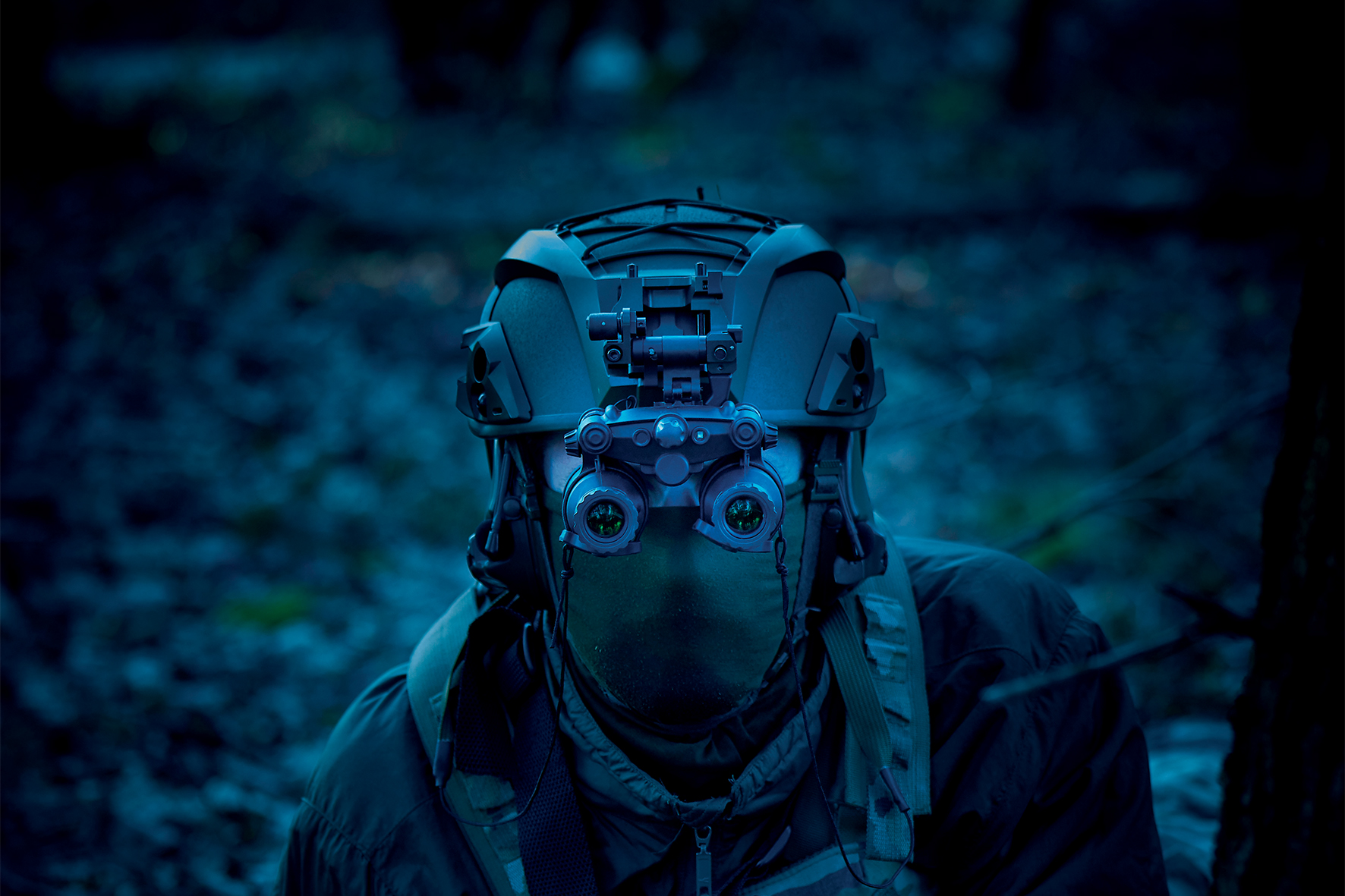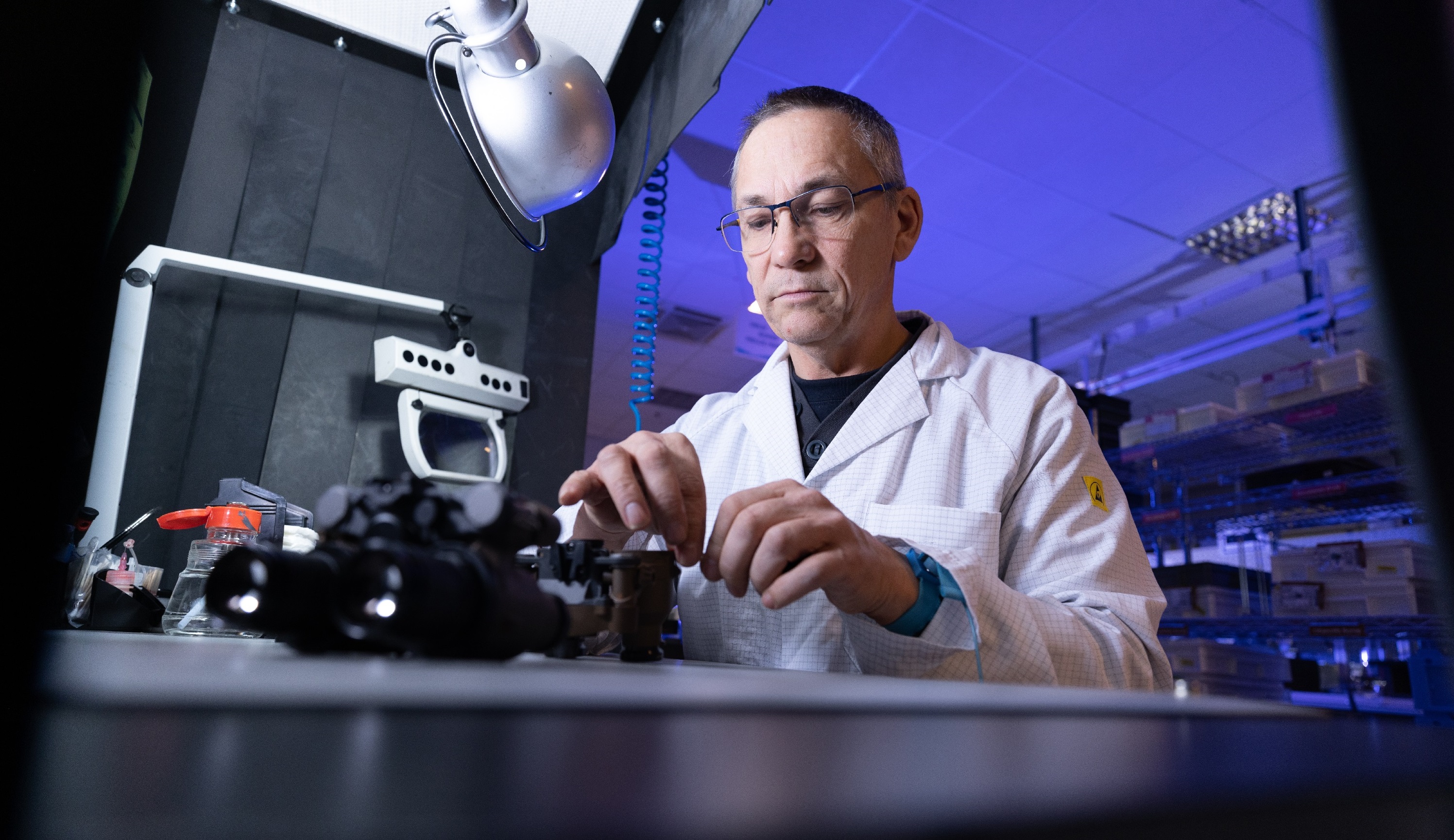A behind-the-scene look at the development of Thales’s soldier optronics solutions
Dismounted soldiers in today’s theatres of operations face extremely complex, fast-moving situations, ranging from insurgencies to high-intensity conflict against increasingly well-equipped adversaries. In such contexts, improved situational awareness is key by day and night to faster and more accurate decision-making by soldiers, and Thales’s night vision goggles (NVGs) play a valuable role in meeting these new operational needs.
Saint-Héand: the Group’s centre of excellence for soldier optronics
Saint-Héand is the birthplace of Pierre Angénieux, and the home of the Angénieux brand. Thales’s facility in the town is where the world’s finest optics are designed and manufactured, including the famous line of Optimo cinema lenses acclaimed by the world’s directors of photography, who are some of the most demanding professionals around when it comes to image quality.
Thales’s night vision goggles are entirely designed and integrated at the Saint-Héand site, which is now the Thales Group’s centre of excellence for dismounted soldier optronics.
In addition to designing award-winning cinema optics, the teams of engineers, optical and mechanical designers and electronics specialists at Saint-Héand also develop night vision goggles for infantry soldiers, assault forces and special forces as well as fighter and helicopter pilots.
A total of 350 employees work at the Saint-Héand site across the full spectrum of functions, from product design to final delivery and support.
In addition to the site’s time-honoured expertise, teams at Saint-Héand can rely on other specific capabilities within the Thales Group. The new Nellie night vision goggle, for example, was designed with an ergonomics expert from the Group’s avionics business specialising in head-worn equipment for pilots.
The final piece in the jigsaw is a network of high-quality subcontractors responsible for manufacturing components. Light intensification (LI) tubes, for example, are supplied by a long-established partner of Thales, the French group Photonis.
Users at the heart of the co-design process
Making the most of this world-class expertise calls for a concerted approach focused on the needs of customers and end users. The design philosophy behind Thales’s optronics solutions – known as User Experience Design (UX Design) – places the user right at the heart of a collaborative innovation process.
Thales’s teams at Saint-Héand typically work hand-in-hand with customers as well as the French defence procurement agency, army strategy and technical sections and planners of special forces operations but also with the allied forces who participate each year in the Sophie Users’ club to develop a “proof of concept” model. Once this model has been validated, the next strategic step is to develop a demonstrator as quickly as possible for users. Based on their feedback, the demonstrator will evolve into the final design as the demonstration sessions progress.
This collaborative, user-focused approach ensures that solutions are fully aligned with operational requirements, offering only the functionalities that soldiers really need, while adding no unnecessary weight to their pack or head-worn equipment. This concern for minimising footprint and maximising autonomy is part of the DNA of our portable optronics solutions. In addition to offering the best compromise in terms of compactness, optical performance, range, autonomy and dark-night vision capability to meet the criteria of Detection Recognition and Identification (DRI), Thales’s solutions sometimes even exceed the initial specifications once the demonstration stage has been completed.
The Nellie night vision goggle, for example, as well as having an extremely compact LI architecture optimised for long night missions, is suitable for both left-handed and right-handed users, irrespective of their dominant eye. This is a clear competitive advantage for large-volume orders.

Maintenance and through-life support are also optimised at the product design process. Environmental protection is an important area of focus, too: all equipment is compliant with REACH/RoHS eco-design standards, and every contract includes provisions for end-of-life product recycling.
The co-design approach also means collaborating closely with component suppliers, and Thales mainly works with French manufacturers to develop the close partnerships needed to analyse bid opportunities and innovate together. For the French O-NYX programme, for example, Photonis improved the performance of its image intensification tubes, and validated its cutting-edge 4G tube technology, which delivers a 50-60% boost in performance compared with previous solutions.
As part of the co-design process, Thales’s engineering teams in the optical, mechanical and electronic design offices at Saint-Héand also share innovative concepts with each other, for example to develop a new image processing solution to overcome some of the constraints associated with optical design. Drawing on high-level optical, electronic and mechanical expertise, this approach is as relevant to night vision goggles as it is to cinema optics, and ultimately serves to boost the overall effectiveness and efficiency of complete optical systems.

With more than 85 years of experience in high-end optics and over 110,000 night vision goggles in service around the world, Thales relies extensively on feedback from successive generations of operational users. This co-innovation strategy is the key to customer trust and confidence today. In France, This trust has been has been repeatedly renewed by the French defence procurement agency (DGA). 40.000 Thales Night Vision Goggles equip the French army. 10.000 others will gradually join the Forces from 2024.


